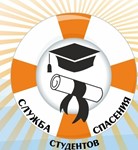Topic 7 Psychological experience of a specialist part 2
Content: часть 2.docx (26.20 KB)
Uploaded: 30.06.2023
Positive responses: 0
Negative responses: 0
Sold: 0
Refunds: 0
$2.44
11. Highlight techniques and techniques that can be used in professional development training
A) T-groups, Encounter groups, Gestalt groups, Transactional analysis, Skills training groups, Group-analytic approach, NLP;
B) psychodrama, body psychotherapy groups, NLP
C) dance therapy, art therapy
D) all of the above
12. Mark the type of temperament presented: Sociable, sympathetic, cheerful. Strives for a frequent change of impressions, easily responds to ongoing events. Emotions - mostly positive - quickly arise and quickly change. Can be distracted, frivolous, irresponsible.
A) sanguine temperament;
B) choleric temperament;
C) melancholy temperament;
D) phlegmatic temperament
13. Mark the type of temperament presented: Prudent, friendly, reasonable, calm. It is difficult for him to switch from one type of activity to another, to adapt to a new environment. Feelings are usually persistent.
A) sanguine temperament;
B) choleric temperament;
C) melancholy temperament;
D) phlegmatic temperament
14. Which of the following features belong to a melancholic:
A) demanding, loyal, idealist, perfectionist, analytical mind, disciplined closed;
B) calm, reliable, tactful, flexible, practical responsible;
C) active, confident, decisive, creative;
D) compassionate, friendly, talkative, selfish.
15. Are trainings for social workers useful and what should they be aimed at.
16. What type of temperament, in your opinion, is most suitable for a social work specialist and which one does not fit at all, justify?
17. Determine to which author the presented definition of professional development belongs
18. Determine which author owns the training definition
19 These foreign authors represent the development of training work. Arrange the names in the correct order according to the dates of creation and introduction of the training groups:
A) D. S. Whitaker (2000), David Lee (2002), V. G. Romek (2003), S. Thorpe, J. Clifford (2004), M. Davis, P. Fanning, K. Paleg (2008), M. Cope (2008), R. Kociunas (2000), D. McKay (2008), M. Hall (2007)
B) D. S. Whitaker, David Lee, J. Clifford, M. Cope, W. G. Romek, S. Thorpe, M. Davis, P. Fanning, K. Paleg, R. Kociunas, D. McKay, M. Hall
C) there are no correct options
20 These domestic authors represent the development of training work. Arrange the names in the correct order according to the dates of creation and introduction of the training groups:
A) L.A. Petrovskaya (1982), Yu.N. Emelyanov (1985), A.P. Sitnikov (1996), S. I. Makshanov (1997)
B) Yu.N. Emelyanov, A.P. Sitnikov, S.I. Makshanov, L.A. Petrovskaya;
C) A.P. Sitnikov, L.A. Petrovskaya, Yu.N. Emelyanov, S. I. Makshanov;
D) there are no correct options
A) T-groups, Encounter groups, Gestalt groups, Transactional analysis, Skills training groups, Group-analytic approach, NLP;
B) psychodrama, body psychotherapy groups, NLP
C) dance therapy, art therapy
D) all of the above
12. Mark the type of temperament presented: Sociable, sympathetic, cheerful. Strives for a frequent change of impressions, easily responds to ongoing events. Emotions - mostly positive - quickly arise and quickly change. Can be distracted, frivolous, irresponsible.
A) sanguine temperament;
B) choleric temperament;
C) melancholy temperament;
D) phlegmatic temperament
13. Mark the type of temperament presented: Prudent, friendly, reasonable, calm. It is difficult for him to switch from one type of activity to another, to adapt to a new environment. Feelings are usually persistent.
A) sanguine temperament;
B) choleric temperament;
C) melancholy temperament;
D) phlegmatic temperament
14. Which of the following features belong to a melancholic:
A) demanding, loyal, idealist, perfectionist, analytical mind, disciplined closed;
B) calm, reliable, tactful, flexible, practical responsible;
C) active, confident, decisive, creative;
D) compassionate, friendly, talkative, selfish.
15. Are trainings for social workers useful and what should they be aimed at.
16. What type of temperament, in your opinion, is most suitable for a social work specialist and which one does not fit at all, justify?
17. Determine to which author the presented definition of professional development belongs
18. Determine which author owns the training definition
19 These foreign authors represent the development of training work. Arrange the names in the correct order according to the dates of creation and introduction of the training groups:
A) D. S. Whitaker (2000), David Lee (2002), V. G. Romek (2003), S. Thorpe, J. Clifford (2004), M. Davis, P. Fanning, K. Paleg (2008), M. Cope (2008), R. Kociunas (2000), D. McKay (2008), M. Hall (2007)
B) D. S. Whitaker, David Lee, J. Clifford, M. Cope, W. G. Romek, S. Thorpe, M. Davis, P. Fanning, K. Paleg, R. Kociunas, D. McKay, M. Hall
C) there are no correct options
20 These domestic authors represent the development of training work. Arrange the names in the correct order according to the dates of creation and introduction of the training groups:
A) L.A. Petrovskaya (1982), Yu.N. Emelyanov (1985), A.P. Sitnikov (1996), S. I. Makshanov (1997)
B) Yu.N. Emelyanov, A.P. Sitnikov, S.I. Makshanov, L.A. Petrovskaya;
C) A.P. Sitnikov, L.A. Petrovskaya, Yu.N. Emelyanov, S. I. Makshanov;
D) there are no correct options
No feedback yet
